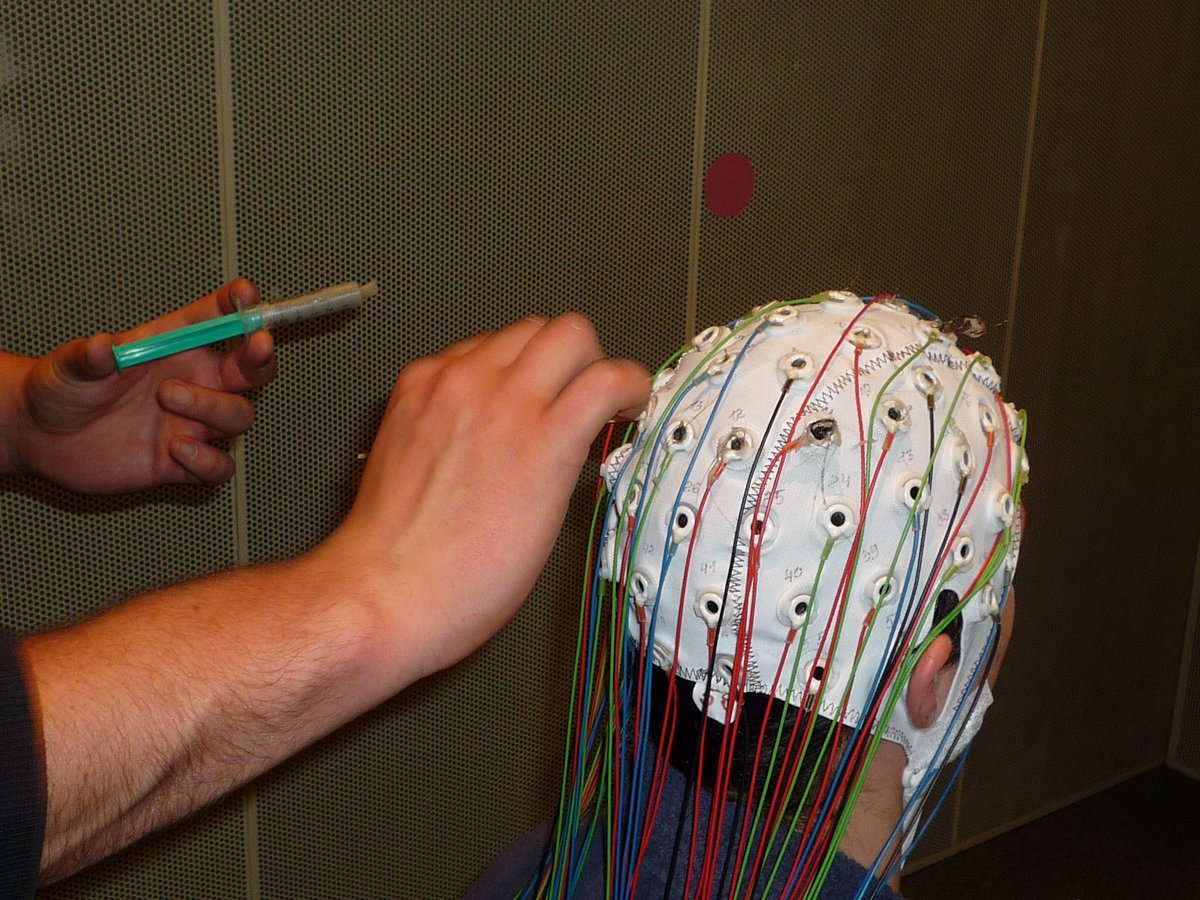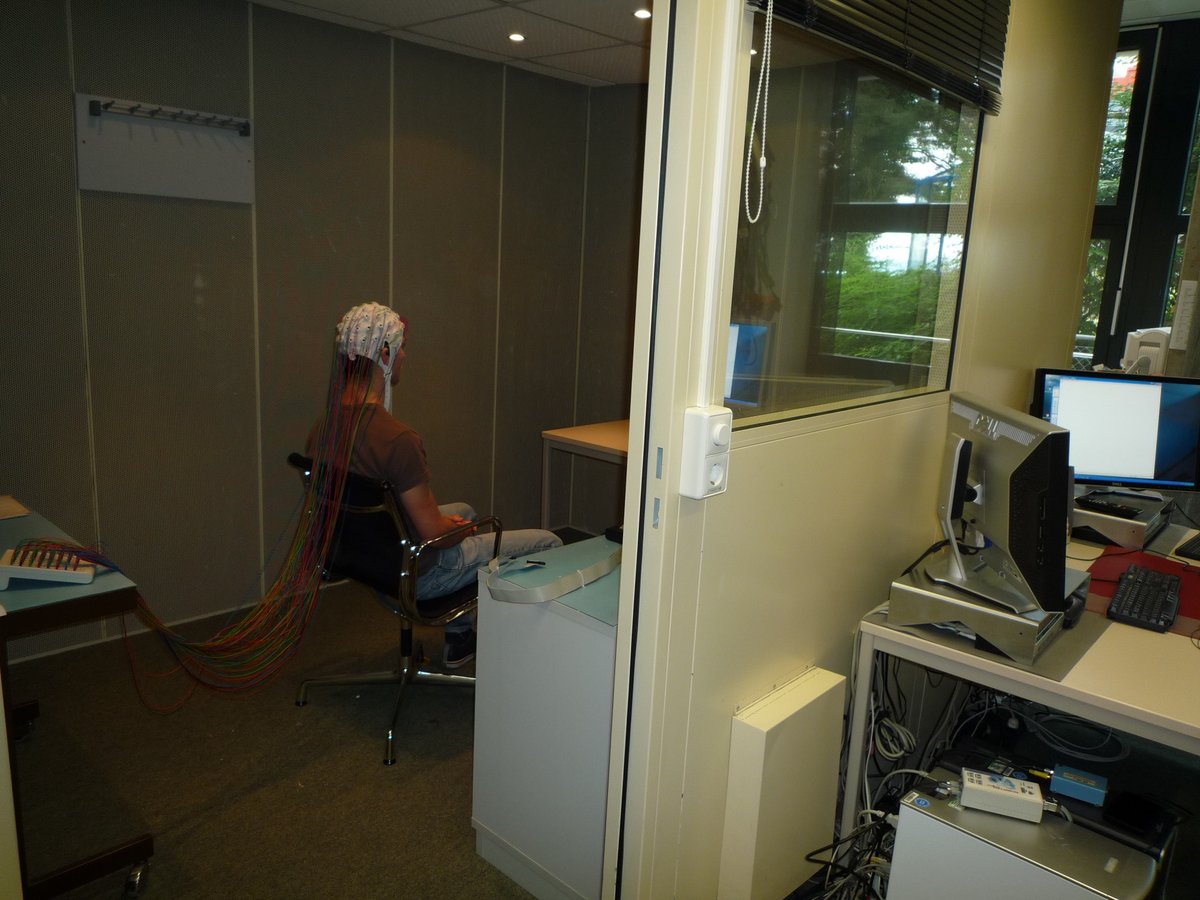Neurolinguistisches Labor (EEG)

How does EEG work?
Electrical currents are generated during all brain functions, e.g. when reading words or listening to speech or viewing pictures. These electric currents are measured in our EEG laboratory. This gives us information about how the human brain works. Of particular interest to us are processes that have to do with listening to, reading and understanding speech and language.
The electrical signals are derived with the help of electrodes on the scalp area. For this purpose, we use caps with up to 64 electrodes attached.

The changes in the electric field that occur during the processing of stimuli in the brain are in the range of a few micro volts (1 micro volt = 0.000 001 volts; for comparison: a flashlight operates at 4.5 volts). Since these changes are recorded with very high temporal accuracy, it is possible to determine exactly how the electric field behaves as a function of the occurrence of a stimulus.
Many of our experiments measure brain activity that occurs automatically when a stimulus occurs. This happens, for example, when speech sounds or syllables are heard.
In these experiments, participants can watch a film while listening passively. Other experiments, on the other hand, require concentration on an auditory or visual stimulus. For example, participants are asked to recognize a certain word or to decide whether it is a word at all. In these tasks, the participants give their answers orally or by pressing a button.
During the EEG measurements, no current is conducted to the body from the outside, only the electrical activity in the brain is measured. Therefore, EEG measurements do not affect the body and are completely harmless for participants.
